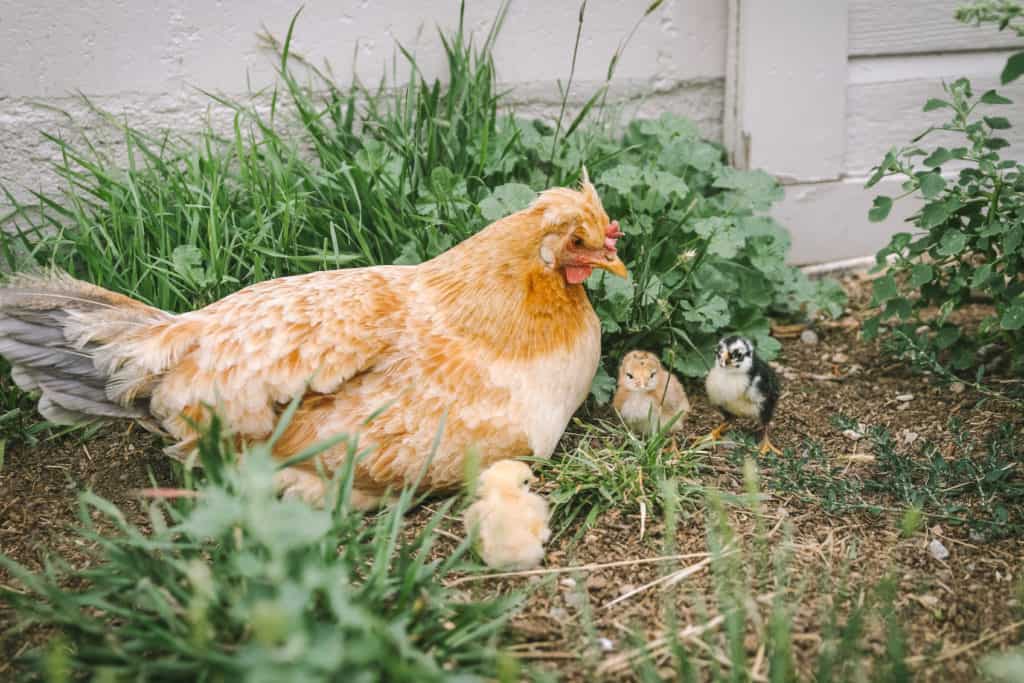
If I have a choice, I’ll almost always pick letting a broody hen hatch eggs over ordering eggs from the hatchery every single time.
However… that requires one important component– something I don’t always have.
A broody hen.
The topic of broody hens isn’t a horribly complicated one, but there are definitely some things to consider, so I decided to create this great big, giant, Ultimate Guide to Broody Hens resource to keep track of all the ins and outs of this not-always-common homestead phenomenon.
(This is a loooong post with lots of info, so use these links to click to the sections most relevant to you.)
What You’ll Learn In This Guide:
Signs/Symptoms of a Broody Hen
How to Let a Broody Hen Hatch Eggs
How Long Does it Take a Chicken Egg to Hatch?
All About the Eggs (marking, candling, and more)
How to Care for the Hen & Chicks After Hatching
What is a Broody Hen?
A broody hen is simply a hen who wants to sit on her eggs and have babies. It seems like it should be the most common thing in the world, right? Well that would be case, other than many of our modern chicken breeds have had this instinct selectively bred out of them. When a hen goes broody, they stop laying eggs. Imagine the commercial egg industry if all the hens insisted on sitting on ALL of their eggs instead of laying an egg per day? It wouldn’t work very well.
Therefore, over the years, chicken breeders have considered broodiness an undesirable trait and have bred to avoid it. And that’s why it’s semi-rare to have a hen who insists on sitting on her eggs.
Signs of a Broody Hen
If you’re wondering if you have a broody hen, here are some signs to look for:
- A broody hen can be aggressive. She might peck at you if you try to reach into the nest or take the eggs under her. She may also chase away other hens to protect her nest. Some hens even growl (yes, really!)
- She won’t leave her nest. Your broody hen will only get up from her chosen spot once or twice a day to eat, drink, and to poop.
- Speaking of poop, a broody hen will sometimes have larger poops (and a bit smellier) than normal.
- She may pull out her breast feathers and use them to line her nest.
- Once she has gathered between 8-12 eggs under her (this can take a few days or she might steal her flock-mate’s eggs), she will stop laying new eggs. She won’t get up from her nest, and will even refuse roosting its her flock at night.
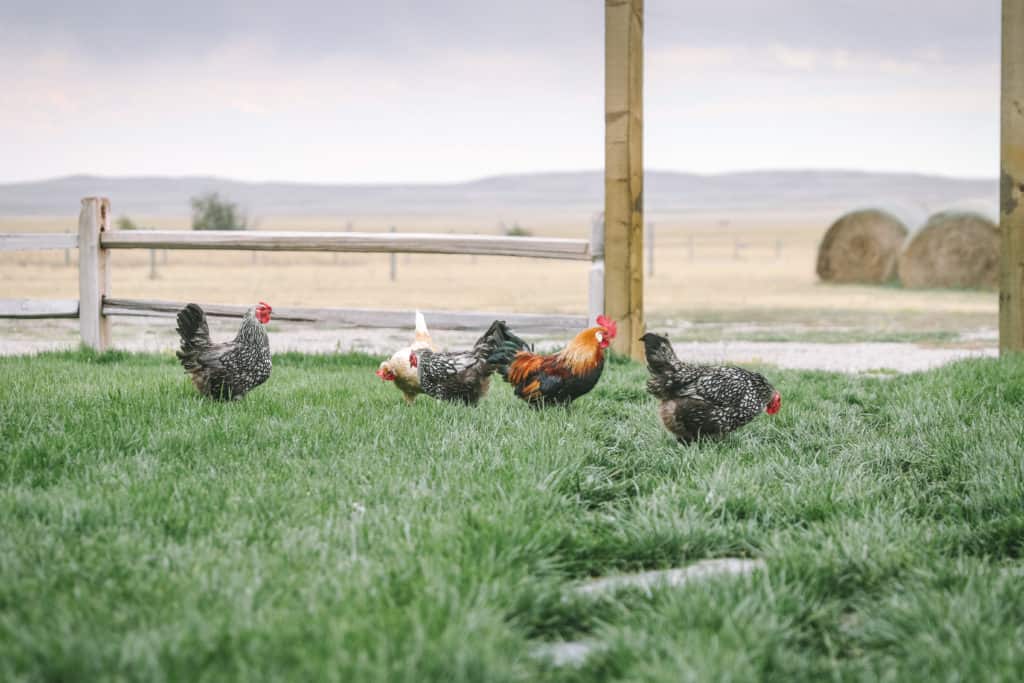
What to Do With a Broody Hen
When you have a broody hen, you have two choices:
- Let her hatch the eggs.
- Discourage her until she stops being broody.
Option 1: Let the Broody Hen Hatch Eggs.
When I have a (committed) broody hen, I almost always let her hatch her eggs. (Because I’m lazy and it’s pretty much like getting free chicks.) 
There’s no need for incubators, chick brooders, or heat lamps because mama hen will take care of everything. The hen will also help them learn to scavenge for food and keep them warm, and a hen typically has a better hatch rate than an incubator, too.
Another bonus: you can use a broody hen to help hatch other chicken’s fertilized eggs, or even turkey, duck, or quail eggs.
The only downside to chicks that are raised from a broody hen is that they generally are more skittish around humans than those raised in an incubator, but honestly, I’m cool with that.
If you are going to let your hen be broody, it’s important to first wait a couple days to see if your hen is completely committed to the process. Sometimes, a hen’s hormones/instincts will go back to normal after a few days. It depends on a variety of factors, (such as their age and breed), but nothing is worse than nest after nest of half-developed eggs…. If after a few days she’s still intent on being broody, here’s what to do:
If you have a rooster (read more owning roosters here), you probably already have a supply of fertilized eggs you can give to your broody hen (or she might have her OWN fertilized eggs under her already).
If you do NOT have a rooster, then your eggs aren’t fertilized, so you will need to purchase fertilized eggs from local farmers, local feed stores, or online. While you wait for those fertilized eggs to be delivered, you can put golf balls or fake eggs under her so she stays intent on being broody.
IMPORTANT: Give your broody hen 10-12 eggs to hatch, and put them under her at the same time so that they will hatch together. (See below for tips on marking the eggs.)
Option 2: Breaking a Broody Hen
Why would you want to discourage a broody hen? Here are a few points to consider:
- Offspring from broody hens are usually more wild and less interested in humans. If you want a closer relationship with your chickens, then chicks from a hatchery are probably a better fit for you.
- You don’t want chicks right now. Perhaps it’s not the right season, or you just don’t have the space or resources for more chickens.
- You want chicken eggs to eat. Once a broody hen has her nest of eggs, she will stop laying, which can be frustrating for chicken-owners who either eat a lot of eggs or sell extra eggs for income.
So how do you “break” a determined hen from being broody? In order to stop a broody hen, you need to encourage her hormones to settle down and cool under her abdomen/vent area. There are a lot of theories/techniques on how to stop a broody hen, but here are a few of the most common:
- Collect her eggs often. Sometimes multiple times a day… (Wear leather gloves when you do– she may be aggressive and peck at you.
- Move the broody hen from her nesting box. You will have to do this multiple times a day, too. Broody chickens are hardcore, man.
- At night, remove the hen from her nest and gently place her on the roosting bar with her flock. Chickens have poor night vision and are creatures of habit, so she will most likely stay with her flock for the night.
- Block the nest area that the broody hen has chosen. This will only work if you can reach her nesting box (sometimes, they choose inconvenient places).
- Take the nesting material out of her chosen nesting box/area. You risk the broody hen just pulling more feathers, but this tactic can work since it gets rid of the comfort she provided for her eggs.
- Place her nest (if it’s movable) into a well-lit area, and possibly noisy and active area, too. Your broody hen wants dark, cozy, warm, and quiet, so give her the opposite environment.
- If your broody hen is especially stubborn, you might need to move her to a dog crate or wire cage/pen. Do not give her shavings or bedding and put the pen in the middle of the flock during the day. This should cool her underbelly enough to stop the broodiness. Leave the hen in the cage for 1 to 2 days (with food and water access), and when you take her out, watch to see if she goes right back to the nest box or if she goes to her flock.
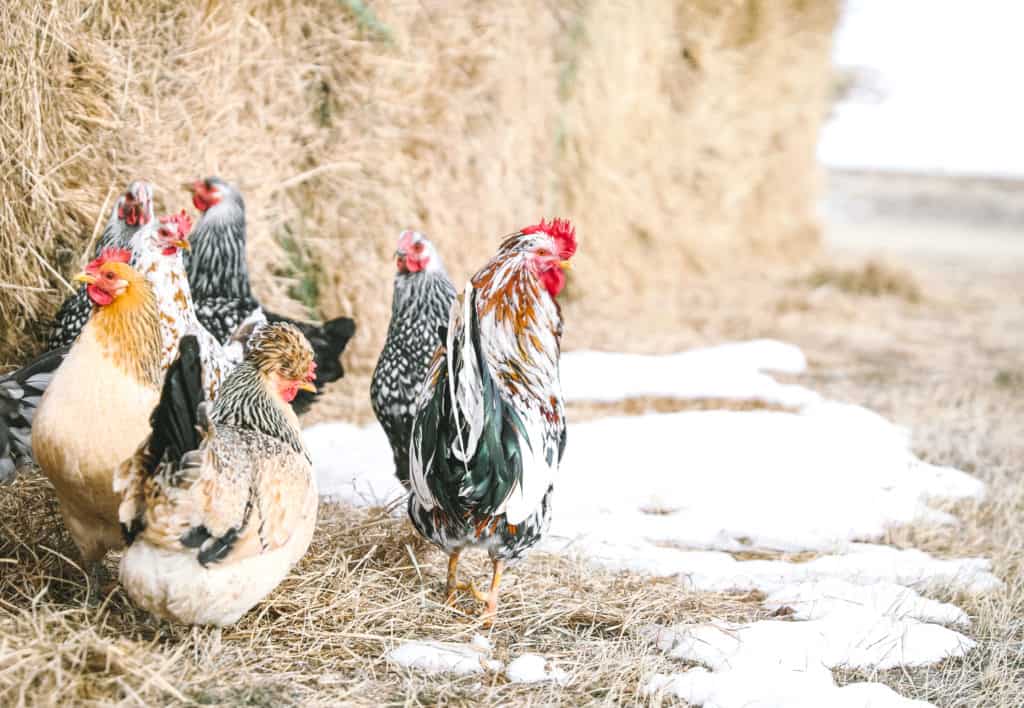
Moving a Broody Hen: Pros and Cons
If you decide to let your hen stay broody, the next issue to consider is location. You can give your chickens the cutest nesting boxes in the world, with herbs and all the fixings inside, but still might decide they’d rather nest on top of the tractor or on the highest corner of the haystack (ask me how I know…).
If your hen has chosen a less-than-ideal location for her nesting adventures, it may make her more susceptible to predators or accidents.
So, should you move a broody hen to a safe nesting box area or leave her be? Let’s take a look at the pros and cons:
Why You Might Want to Move a Broody Hen and Her Nest:
- So she can still socialize with the flock. If she is off in another location, you will need to reintroduce her and her chicks to the flock later on.
- To keep her safe. If your hen has chosen a vulnerable location for her nesting adventures, it may make her more susceptible to predators or accidents.
- To ensure she has access to food and water.
- So you can keep better track of the eggs. You can mark the eggs to get an idea of when they will all hatch (and to help you know which eggs might be bad or too new to hatch on time)
- So she can have more peace and quiet.
Why You Might Want to Leave the Broody Hen Where She is:
- Moving her nest and eggs is incredibly stressful for her. In her stress, she might abandon the nest or crush some of the eggs.
- She chose a spot that she personally thinks is safe. Perhaps your actual nesting boxes are too hectic and she might know best. If she chose a place safe from predators and the elements, you might want to simply trust the broody hen’s instincts.
If you DO decide to move your broody hen, it is important to set everything up in advance. Prepare a nesting area for her before you move her, whether it’s one of the nesting boxes in your chicken coop, or in a safe and enclosed pen. Make sure the designated nesting area has access to food and water as well as some room for her to walk a bit and relieve herself.
- Fill the nest with the same nesting material that she’s already using so she is accustomed to it.
- Once you have everything set up, it’s best to wait until dark to move her. She will be sleepy, unable to see well, and hopefully calmer.
- Put on gloves to protect your hands from any protests on her part. (She’ll likely be grumpy).
- Transport her eggs into the new nest.
- Then go back for the hen. Carefully hold her against your body so that she cannot flap her wings.
- Bring her to the nesting area but do not put her directly on the the nest. She might panic and crush her eggs.
- Walk away and return later a little while later to check and see if she has accepted her new nesting location or if she is no longer broody.
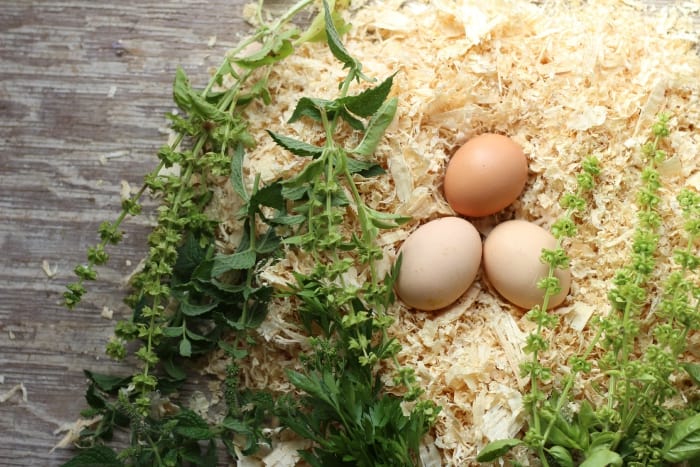
How Long Does it Take Chicken Eggs to Hatch?
Chicken eggs will hatch 21 days after incubation, and duck eggs will hatch 28 days after incubation. (Be sure to mark the dates on your calendar!)
All About The Eggs…
OK, so you’ve got a broody hen in a safe place with her nest of eggs. At this point, there’s nothing wrong with letting nature do its thing and simply waiting until you hear the peeps of happy chicks in the nest.
However, if you want to stay a bit more involved, there are a few things you can do throughout the hatching process:
Marking Her Eggs
Once the hen has 8-12 eggs under her, it’s a good idea to mark the eggs with a pencil or sharpie marker. The eggs need to all hatch on the same day, so the marks will help you determine whether or not another hen may have visited the nest and “shared” some of her eggs.
If You Bought Eggs for Your Broody Hen to Raise:
If you purchased fertilized eggs for your hen to sit on, unwrap the eggs carefully and make sure you do NOT wash them. We need the protective bloom on the shell to stay intact.
If you have an aggressive broody hen, wait until she gets up from the nest to eat or drink, then place the eggs in the nest. If she is letting you touch her, you can gently lift her and put the eggs under her. If you gave her golf balls, fake eggs, or infertile eggs to keep her broody until your egg shipment arrives, remove the fakes as you give her the new ones.
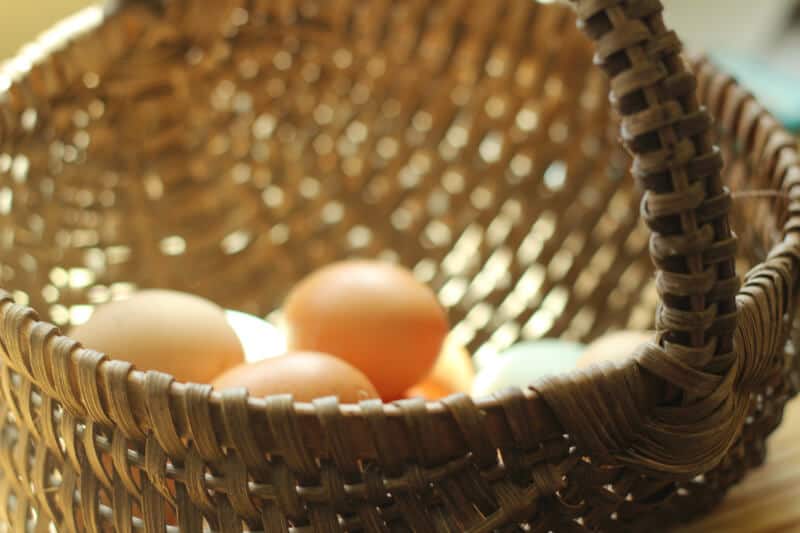
Should I Candle the Eggs?
I don’t… Not for eggs under a broody hen at least. The only reason I would candle the eggs is if I was concerned the hen was sitting on a giant nest of unfertilized eggs, but for the majority of cases, the risk of disturbing the hen/nest isn’t worth the information you’ll gain.
Candling the eggs (shining a bright light on the egg to see what is inside) is almost like an ultrasound: you get to check up on the progress of growth. Candling eggs used to done with an actual candle, but now most people either use special equipment (like this candling device) or just a bright flashlight. If you use a flashlight, shine the light directly under the egg until it illuminates the contents. An underdeveloped egg will be clear. A developing egg will have blood vessels coming out of the center of the embryo. You should also see a clear area where the air sac is located. Eggs do best with very little interference, but if you absolutely must candle them, there won’t be much to see before day 7. And you absolutely should not disturb the eggs after day 17, so shoot for somewhere in that time frame.
Sometimes hens will know when an egg is not developing and will kick it out of the nest. If you notice an egg out of the nest, put it back the first time. Later, if you see the egg out of the nest again, you can candle the egg to check for development.
What Should I Do On Hatching Day?
Not much! Broody hens are devoted to their eggs and take care of everything else by instinct. More often than not, I only know the eggs have hatched when I see the chicks running around the barnyard with the hen.
It is tempting to get involved, but it’s best to let mama hen be in charge. You might see chicks struggling to get out of their eggs, but the eggs should not be removed from the nest. It’s best if you just leave them alone for hatching day, since your presence can stress the hen.
If it is a first-time mama hen, you might want to quickly peek in from time to time to make sure all is well as sometimes, VERY rarely a first-time mama hen will confusedly peck a hatching chick to death. Once the first few chicks are hatched, though, you can relax and let them do their thing.
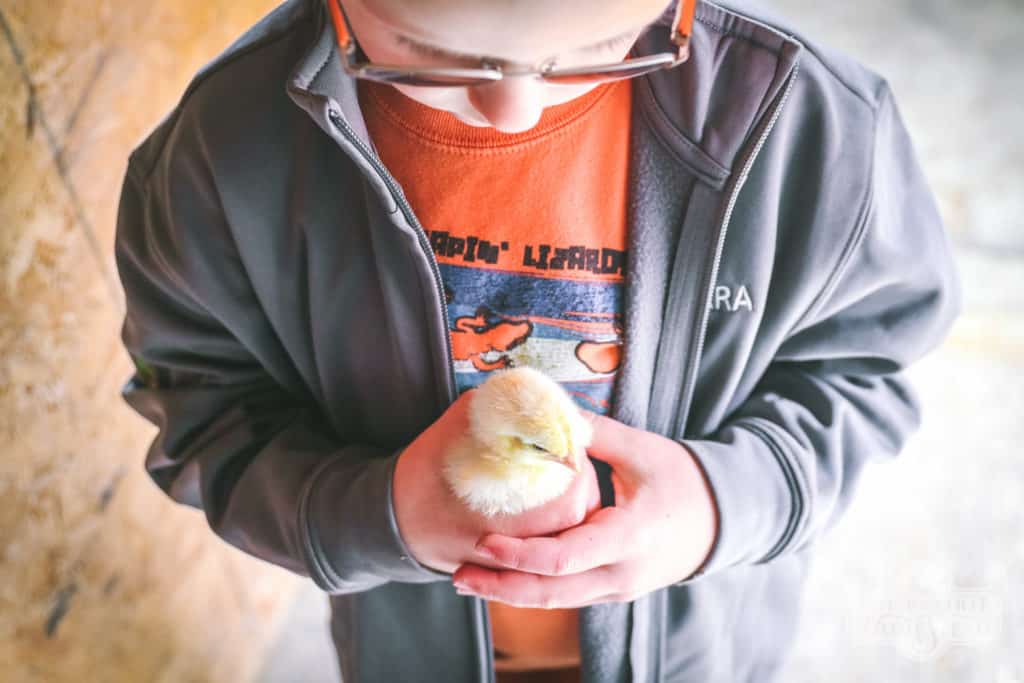
Raising the Chicks After Hatching
You have three choices when it comes to raising your new chicks:
1. Leave the chicks with their mama and the flock
Leaving the hen and her chicks with the flock is the least disruptive option and is the one I usually choose.
This will allow the hen and chicks to continue to interact with the flock, and will also allow the chicks to get used to the pecking order, as well as learning to forage with the flock for bugs and greens. However, predators may be more of a concern with this option, and if you keep your flock in a very confined pen or run, it’s possible that some of the other flock members may attack young chicks.
2. Remove the mama hen and the chicks to a private brooding pen
If you remove the mama hen and the chicks due to conflicts with the flock, predators, or to save money on chicken feed, you will have to integrate them back with the flock later, which can be time-consuming. You will also have to provide food and water for both your flock and your brooding pen, which adds to your homestead chores.
(Re-introducing your flock to the mama hen and the chicks can go easier if your separated pen is visible to the flock so that they can all see each other.)
3. Remove the chicks from the hen and raise them in a brooder
This is the most time-intensive option, as you’ll need to keep a heat lamp on the chicks and watch them more closely. Honestly, I figure if I let the hen get this far, why not let her just finish the parenting process? It’s easier on me and she does a great job.
Moving a MAD Mama Hen
We had to move our last batch of hatched chicks to protect them from our very immature English Mastiff puppy… Let’s just say that things got a little western.
Beyond the Brooder…
Once you have figured out whether you are leaving the mama and her chicks with the flock or in a separate pen, there’s not much to do. She will keep them warm if they get cold, sleep on them to protect them at night, and teach them about food and water.
When the mama hen feels that the chicks are old enough to be on their own (around week 4 or 5), she will begin to distance herself from the chicks and may even peck at them if they follow her around. At some point, she will stop sleeping with them and you might find her right back in the nesting box with new eggs and you’ll have a broody hen on your hands once again.
Whew! I’m pretty sure that was (almost) everything you ever could have wanted to know about keeping, raising, moving, and breaking broody hens. Any tips or best practices you’d like to add? Leave a comment below and share your expertise!
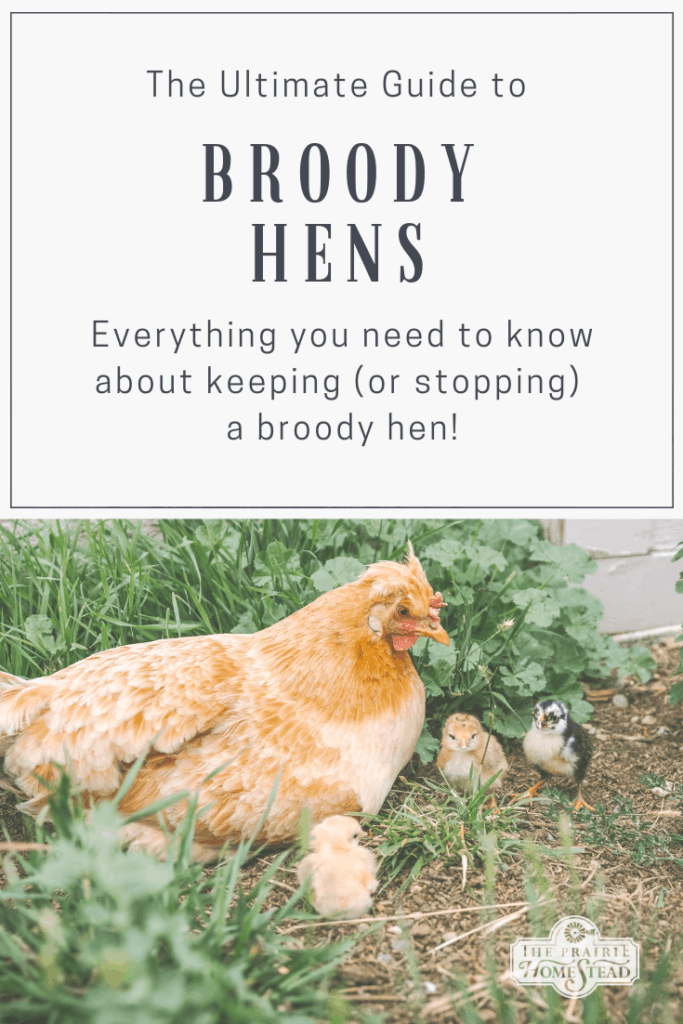
More Tips on Raising Chickens:
- How to Save Money on Chicken Feed
- 5 Easy DIY Chick Brooders You Can Make
- Supplemental Lighting in the Chicken Coop
- Do My Chickens Need a Heat Lamp?
- Homemade Suet Cakes for Chickens
- A Beginner’s Guide to Chicken Coops
The post The Ultimate Guide to Broody Hens appeared first on The Prairie Homestead.
Via Gardening http://www.rssmix.com/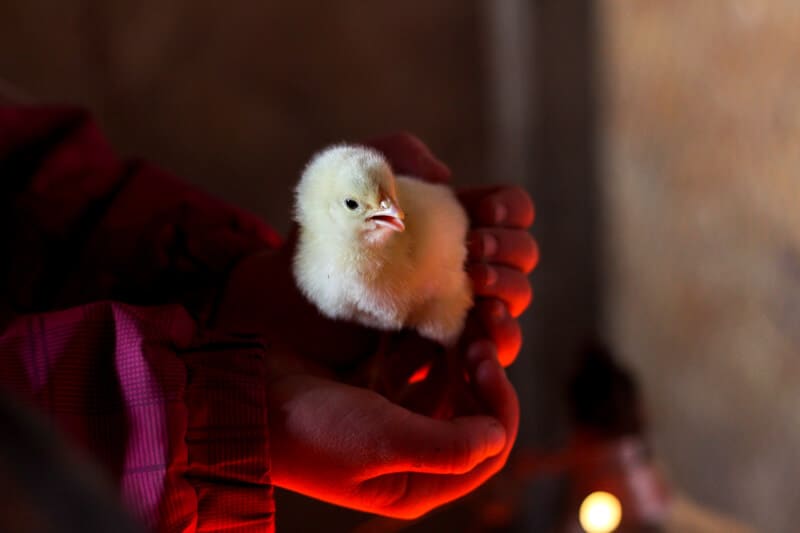
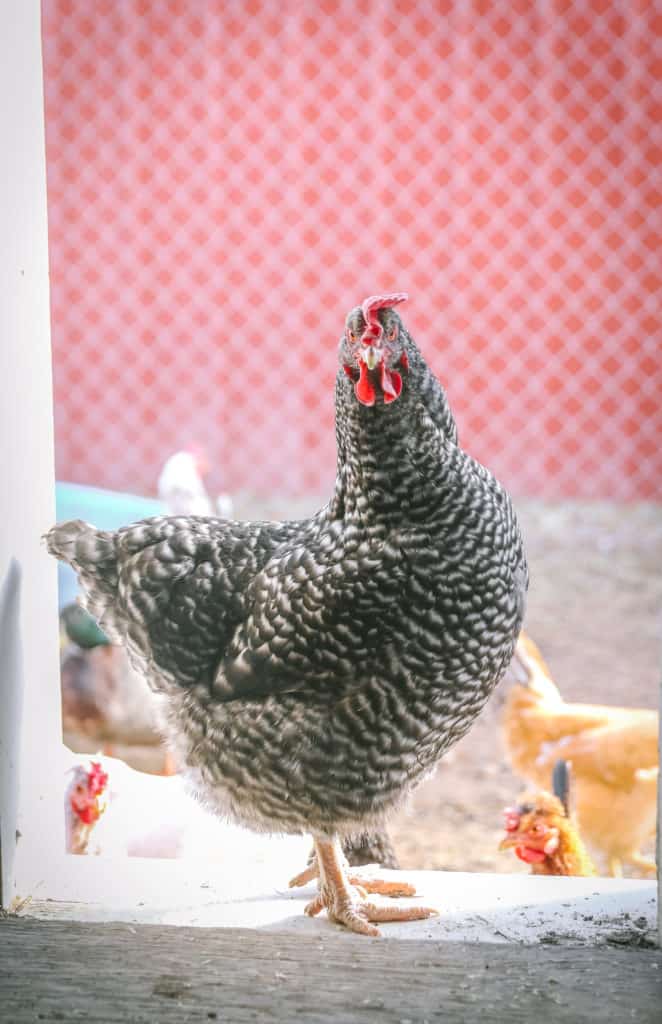
No comments:
Post a Comment